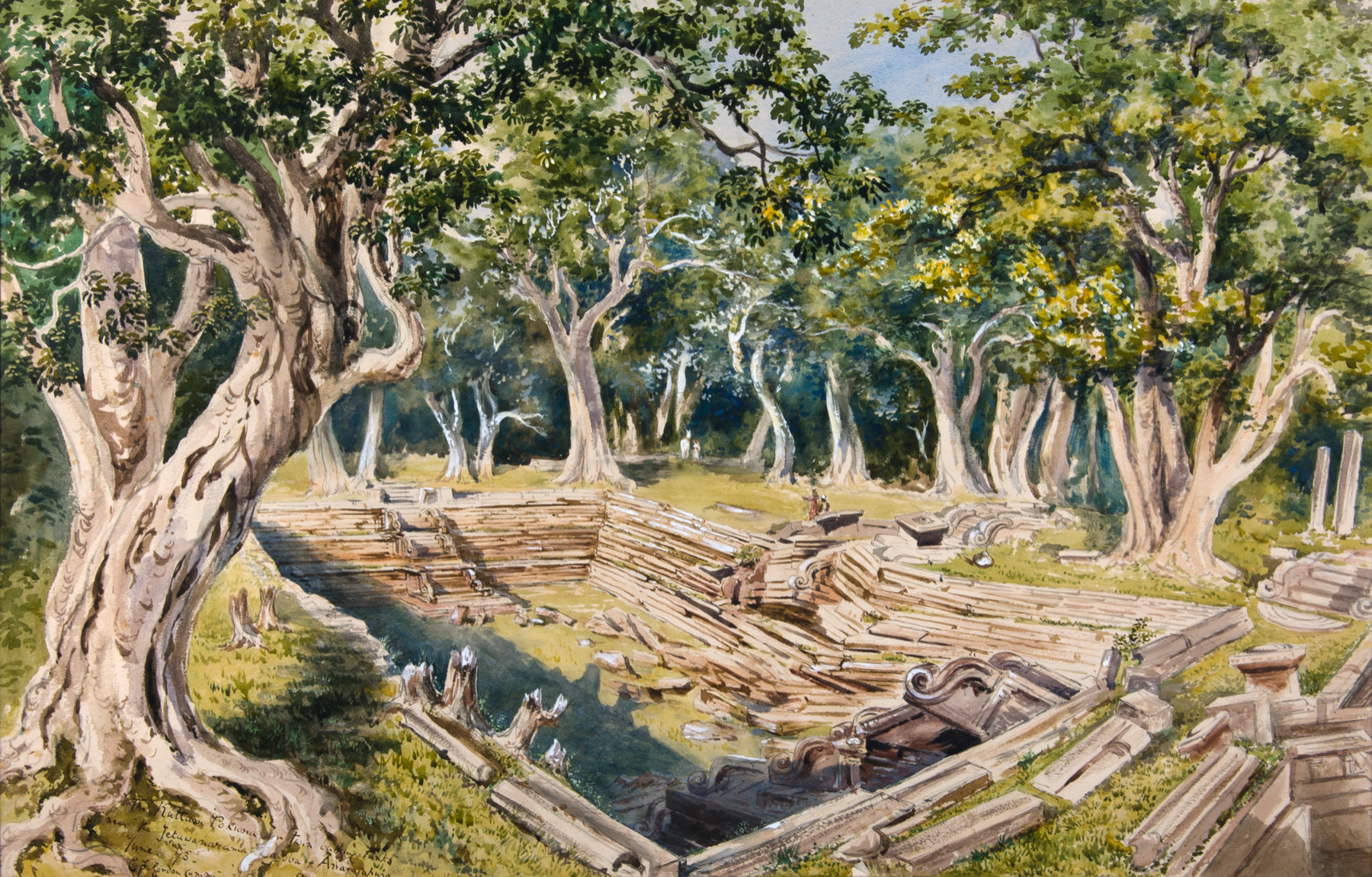
(click image to enlarge)
During her visit to Anuradhapura in June 1873, Constance Frederica Gordon-Cumming came across the Kuttam Pokuna, or ‘twin pools’, in the gardens of the Abhayagiri Monastery. She described them as ‘two beautifully constructed tanks, lined with great stones laid in terraces, and flights of steps, with handsome balustrade descending from every side to where water once was’. She was certainly impressed by this ‘strange ruin of ancient luxury’, declaring it ‘as remarkable a scene as any in the jungle city’ (Two Happy Years in Ceylon, 1892, page 427). Constructed as bathing pools for the Buddhist monks, possibly during the sixth century AD, the Kuttam Pokuna was a remarkable feat of hydrological engineering, as the water was supplied through a series of underground pipes and filters before entering the pools. When Gordon-Cumming visited the site, one pool (presumably unseen to the right of the present image) had been restored as a bathing-place, while the other had been left as an archaeological study.
Gordon-Cumming records the pools as being near the Jetawanarama Dagoba, a Buddhist ‘stupa’, or monument, that had been the tallest of its kind and the third tallest structure in the world on its completion in the third century AD, standing at 400 feet high. It fell into disrepair following the fall of Anuradhapura in the eleventh century, before being rebuilt in the following century at 233 feet, the height it stands today. Approximately 93.3 million bricks were used in its construction, enough, according to Gordon-Cumming, to ‘construct a town the size of Ipswich or Coventry, or form a wall one foot in thickness and two feet in height, reaching from London to Edinburgh!’ (op cit, page 386).